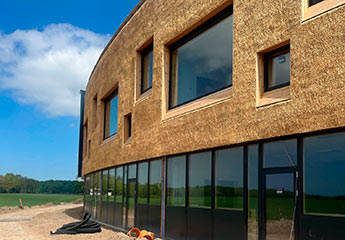This project aims to support sustainable construction by enabling the use of sustainable building facades, which can significantly reduce CO2 emissions and energy consumption. However, bio-based materials used in these facades pose fire risks. Additionally, energy-saving solutions like sunscreens and PV panels can increase the potential for fire spread. As a result, there is a pressing need to predict how combustible materials behave in facade fires.
To address these challenges, the project will introduce a new commercial service that provides fire safety engineers, architects, and producers with a more reliable pathway to approve wood cladding facades while ensuring building safety. The project's scientific objectives include creating fire models for these materials and developing an assessment service for facade fire performance. This involves finding the most suitable model for wood cladding through small-scale tests, implementing the model in computational tools, constructing a comprehensive facade system model, and assessing uncertainties and errors in fire spread predictions. Additionally, the project aims to establish a connection between the behavior of reduced-scale facades and full-scale facades. The ultimate goal is to promote the acceptance of this performance-based fire engineering approach among certified professionals in the industry.
The success of the project will be determined by the accuracy of the new models in predicting fire spread, heat fluxes, and heat release in facades, with a target accuracy of 10% compared to test measurements. Moreover, the new service aims to approve at least five facades within one year after the project's completion.
Photo: Julie Gjettermann Bergelin, Pålsson Arkitekter AS

